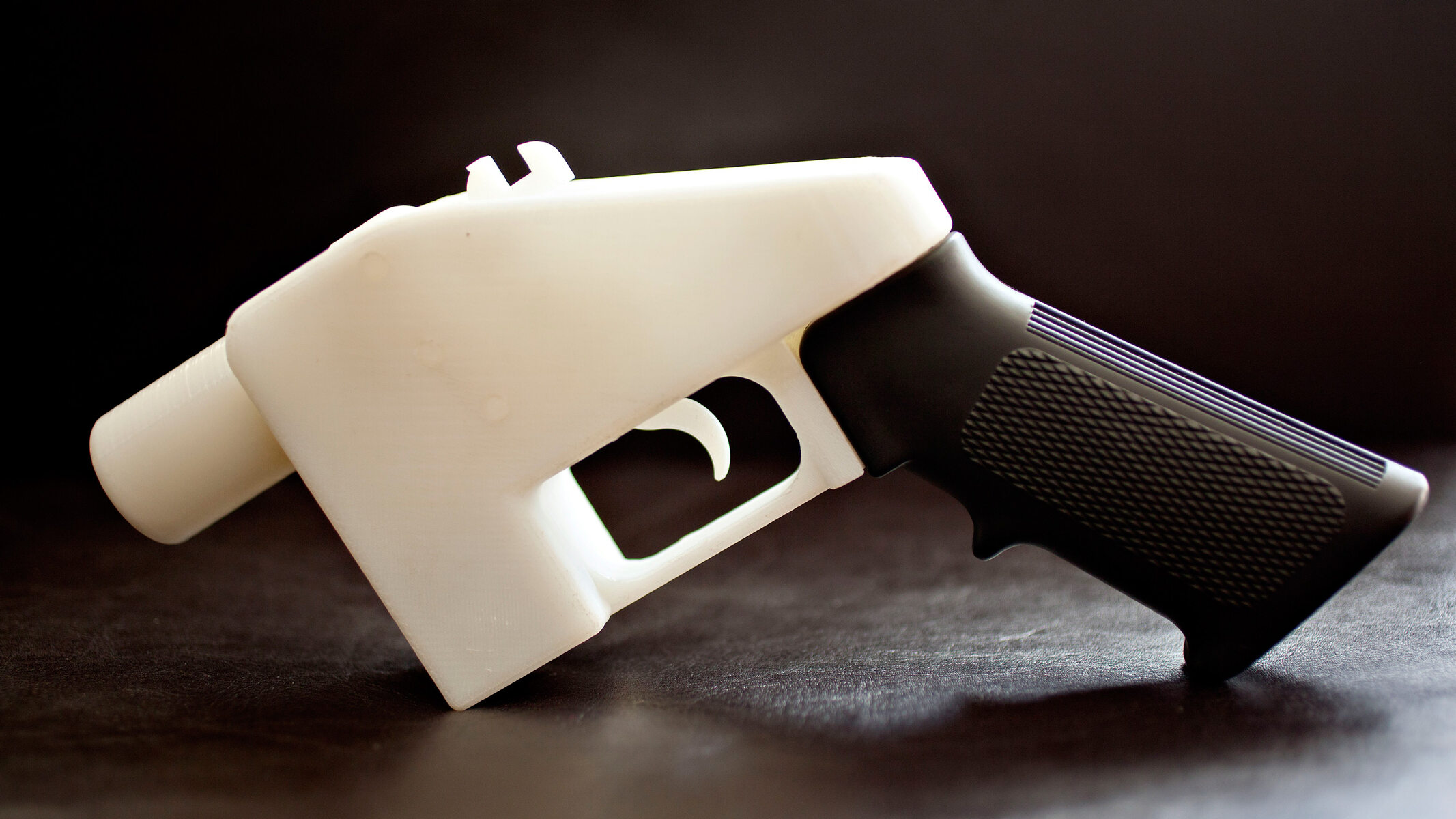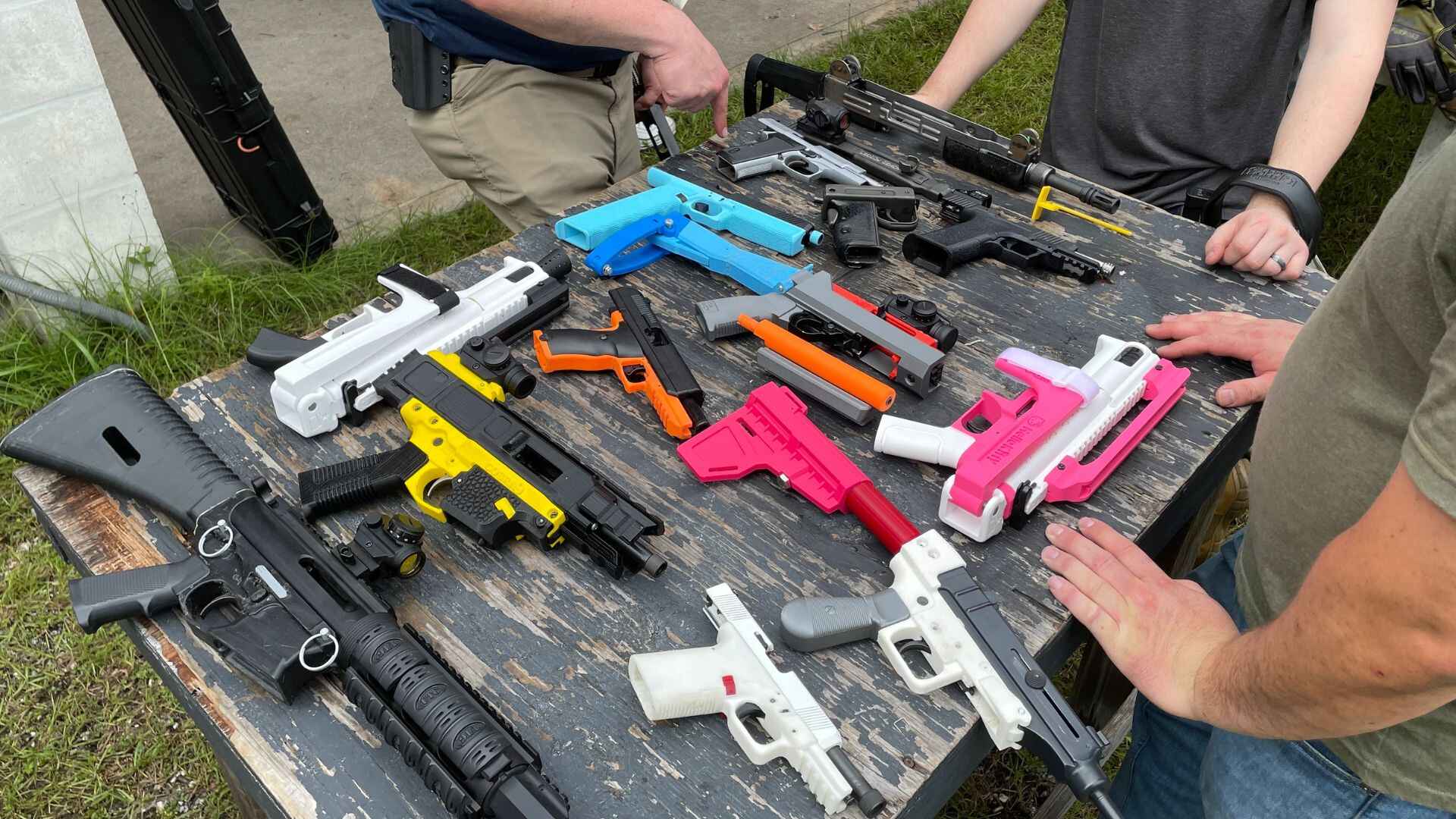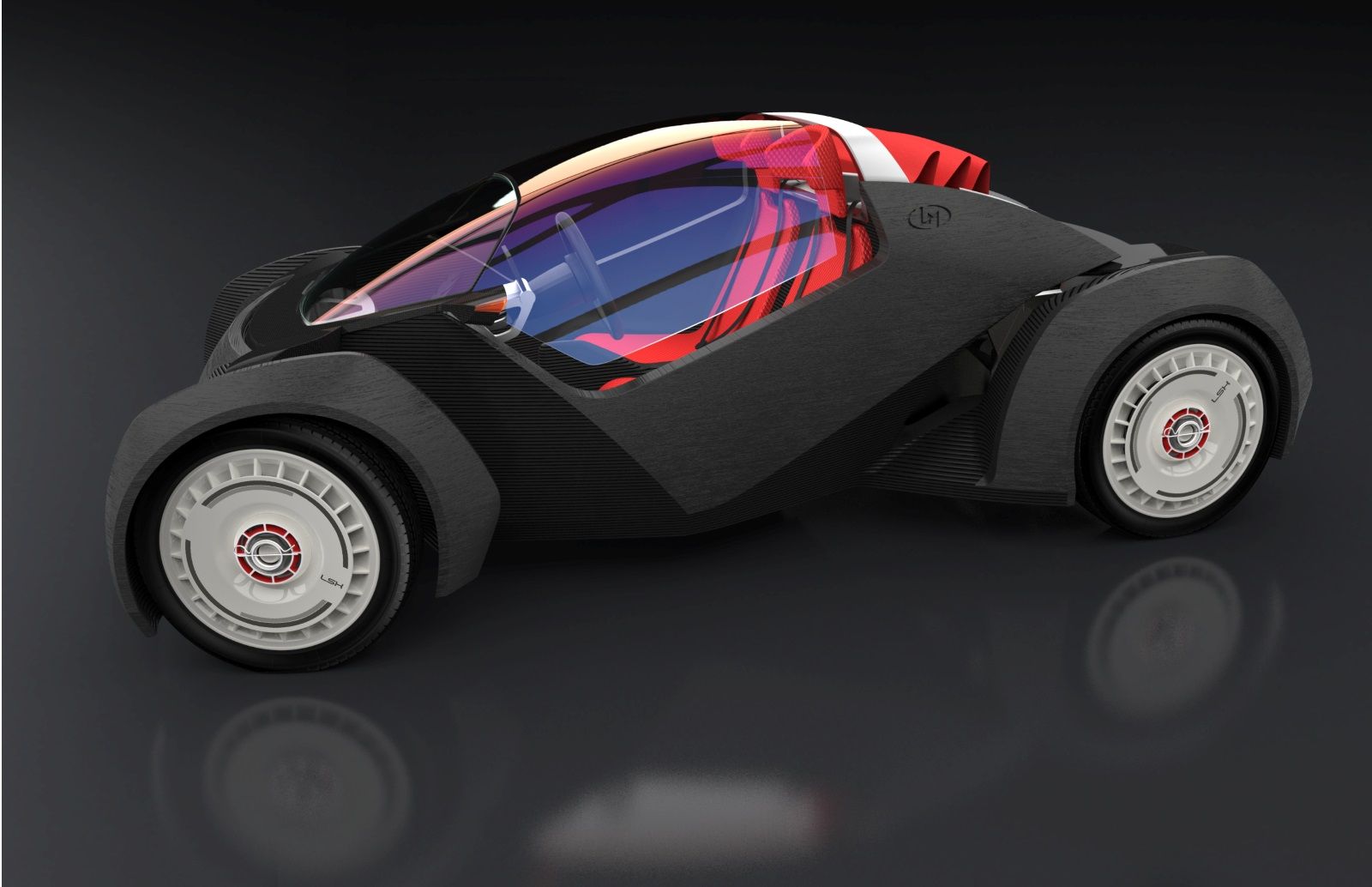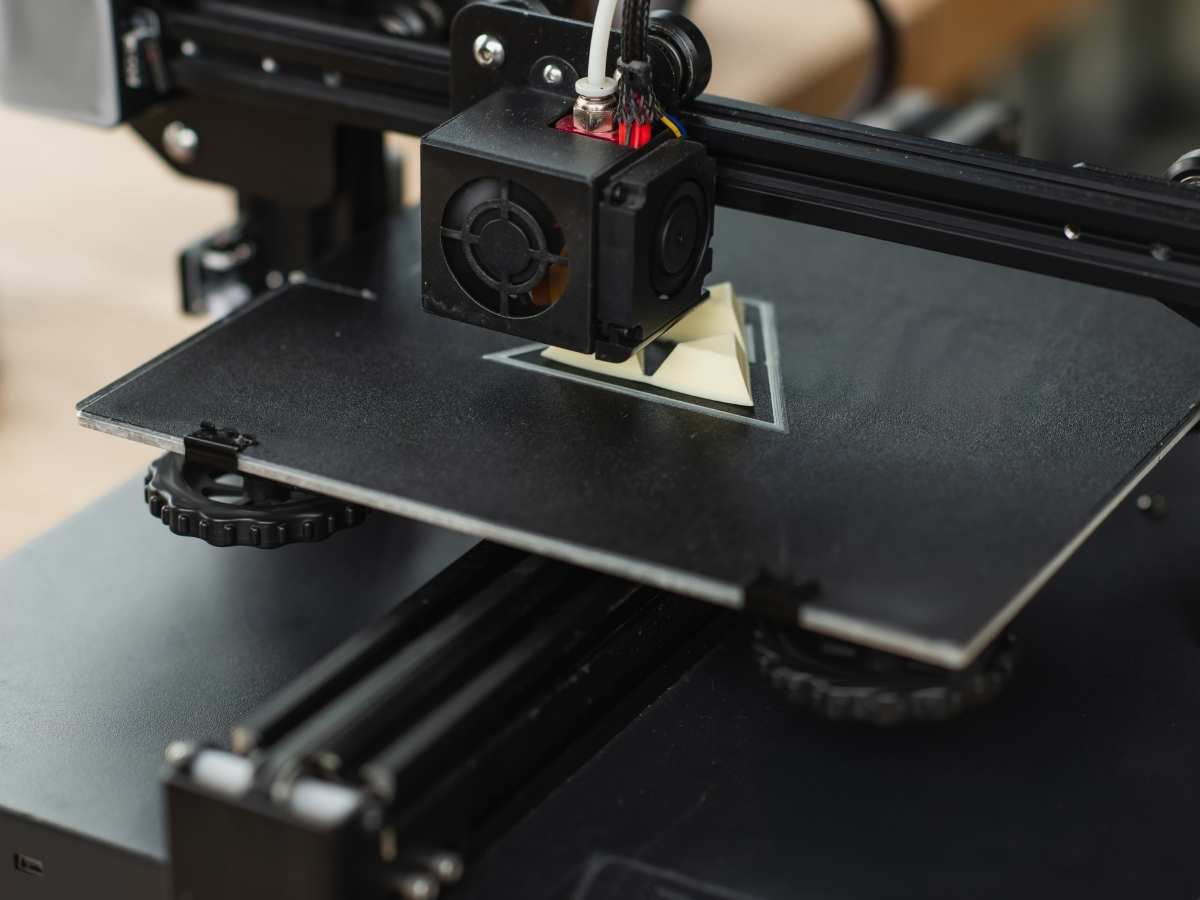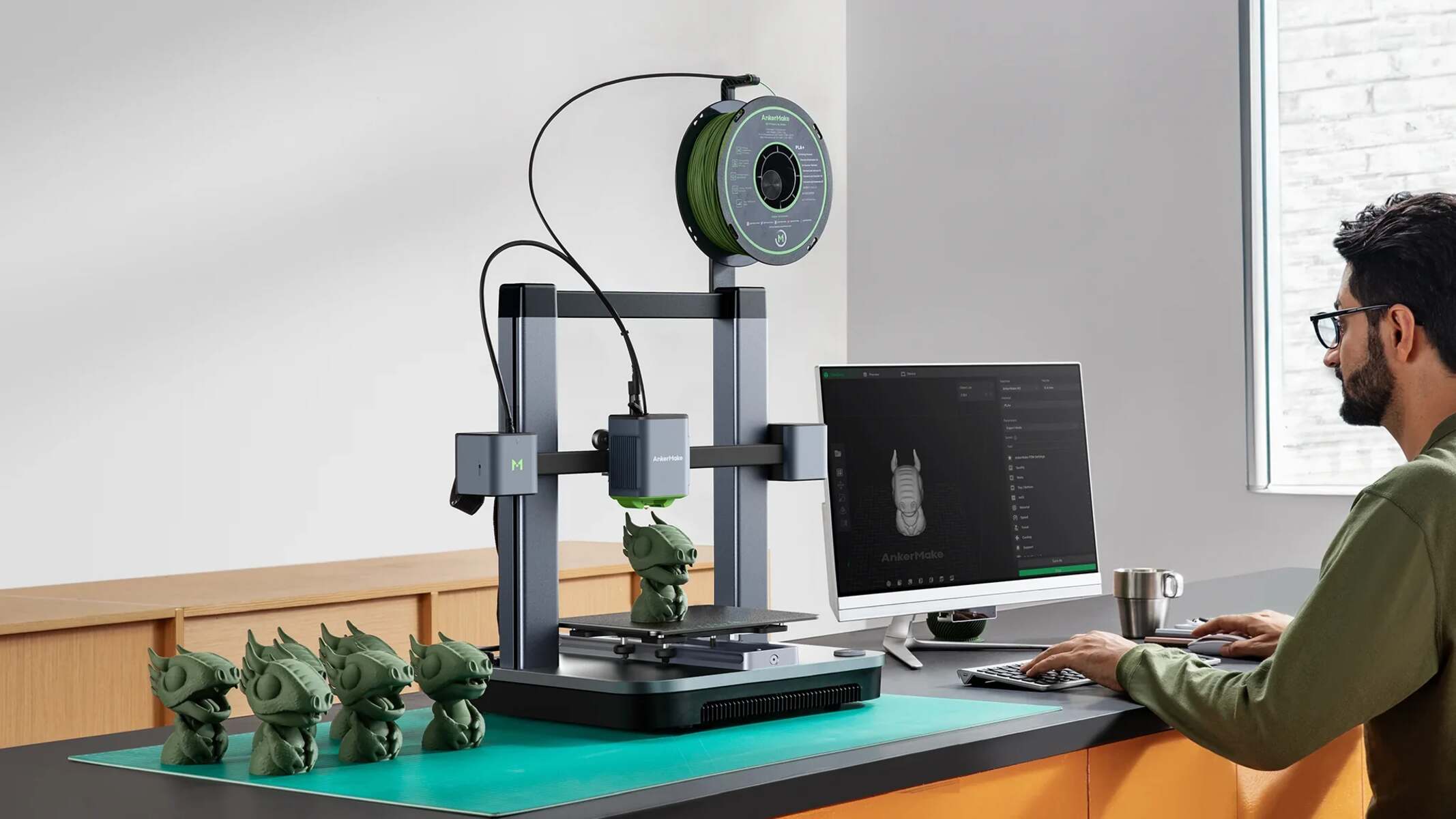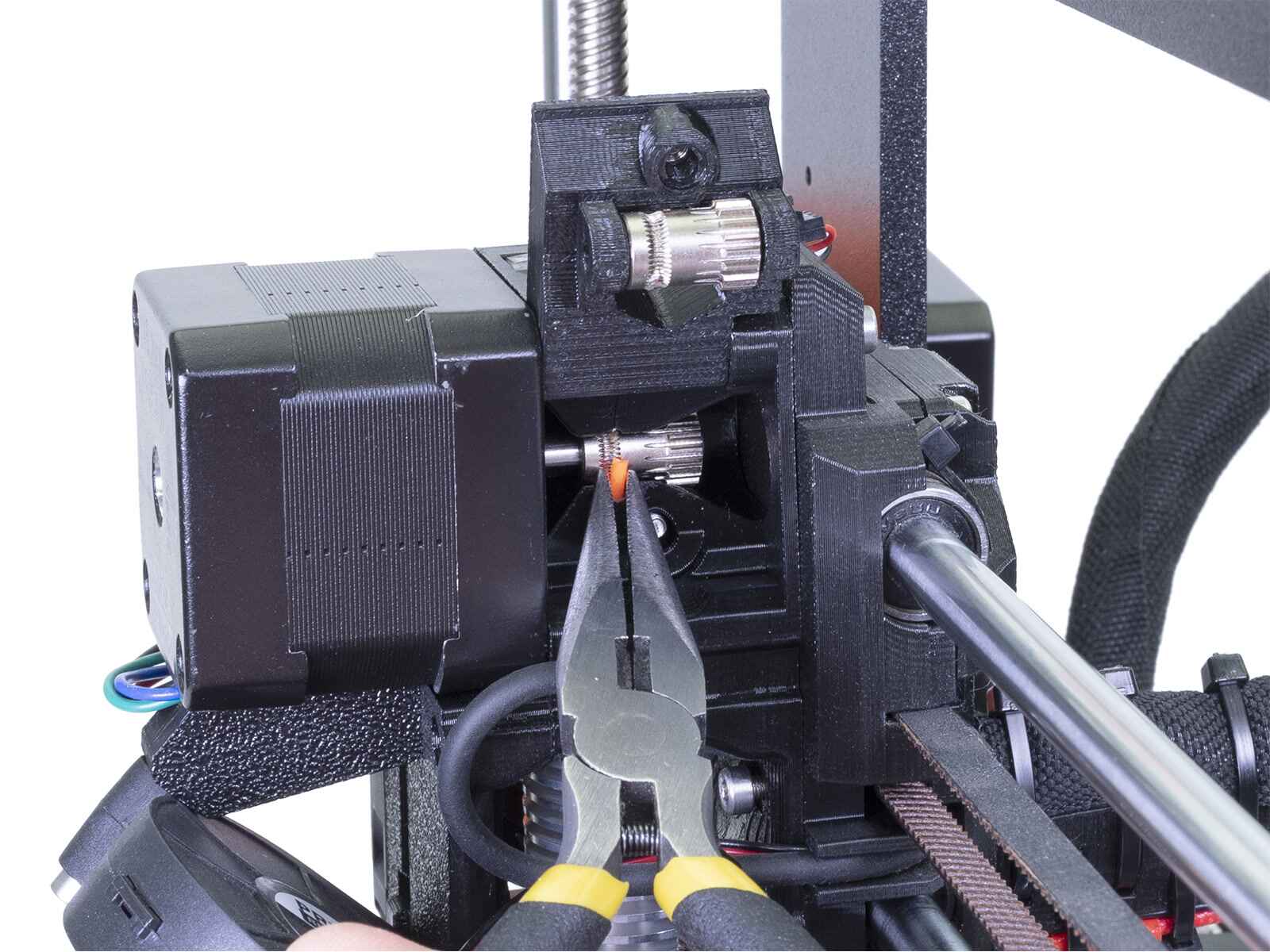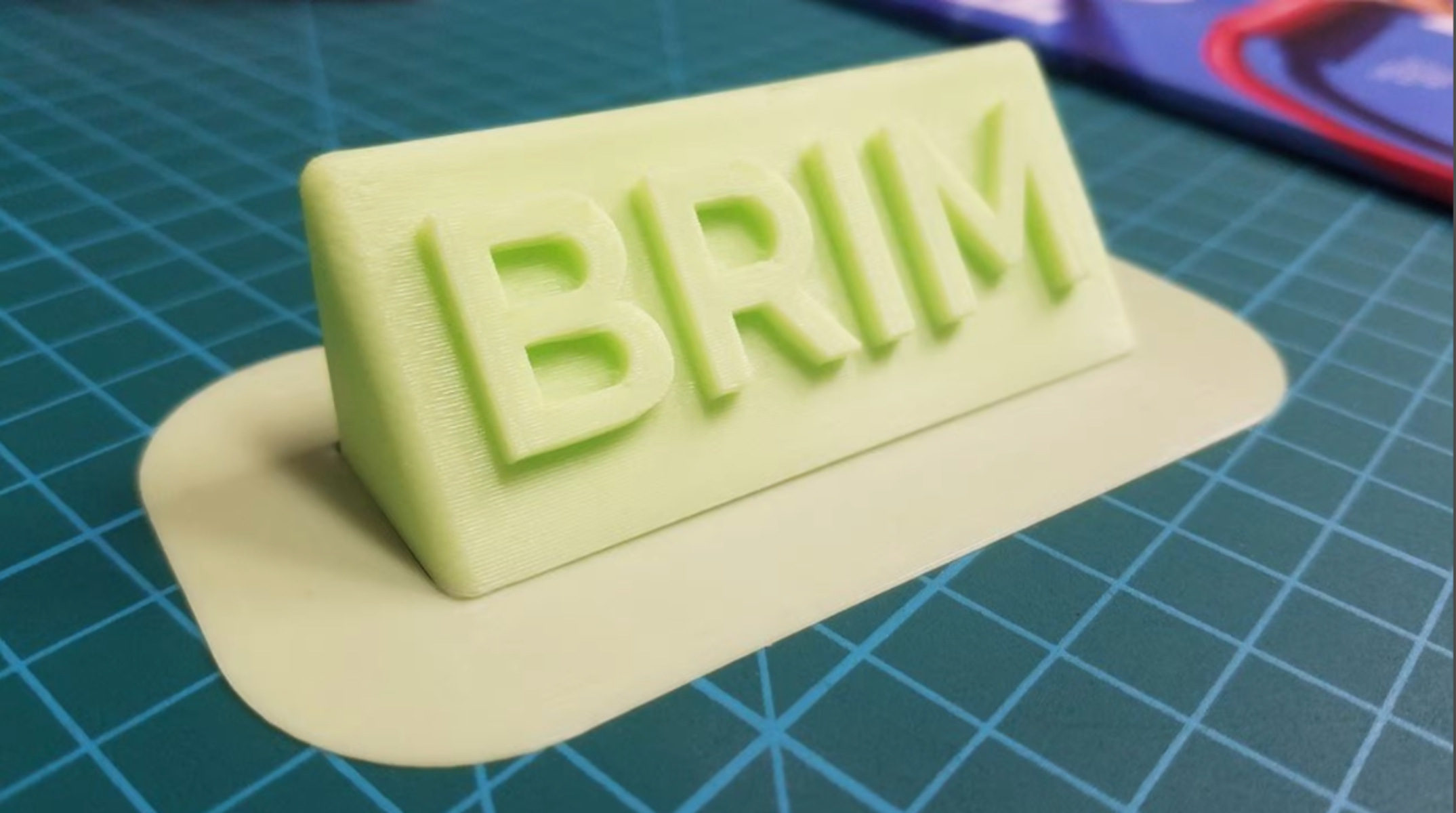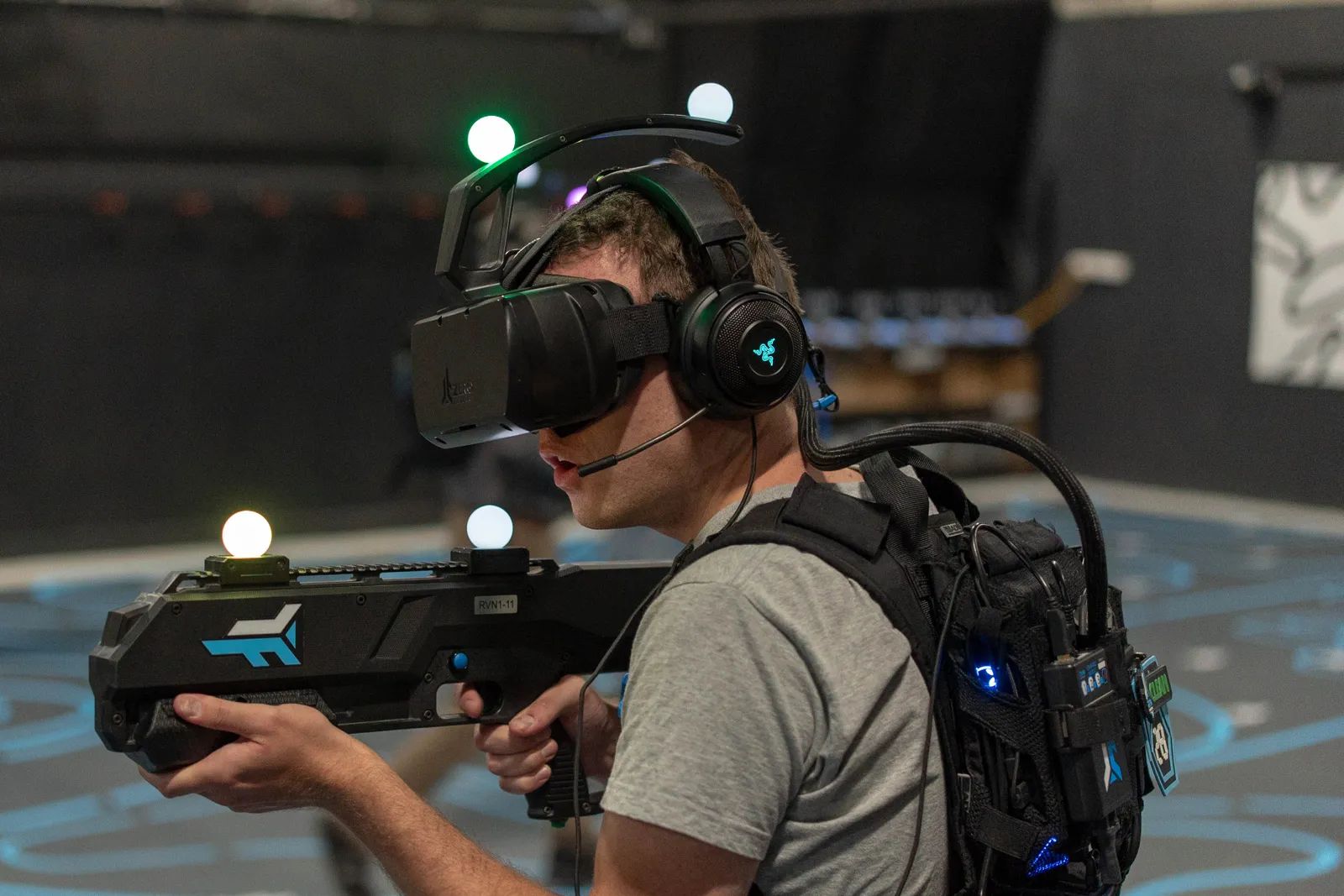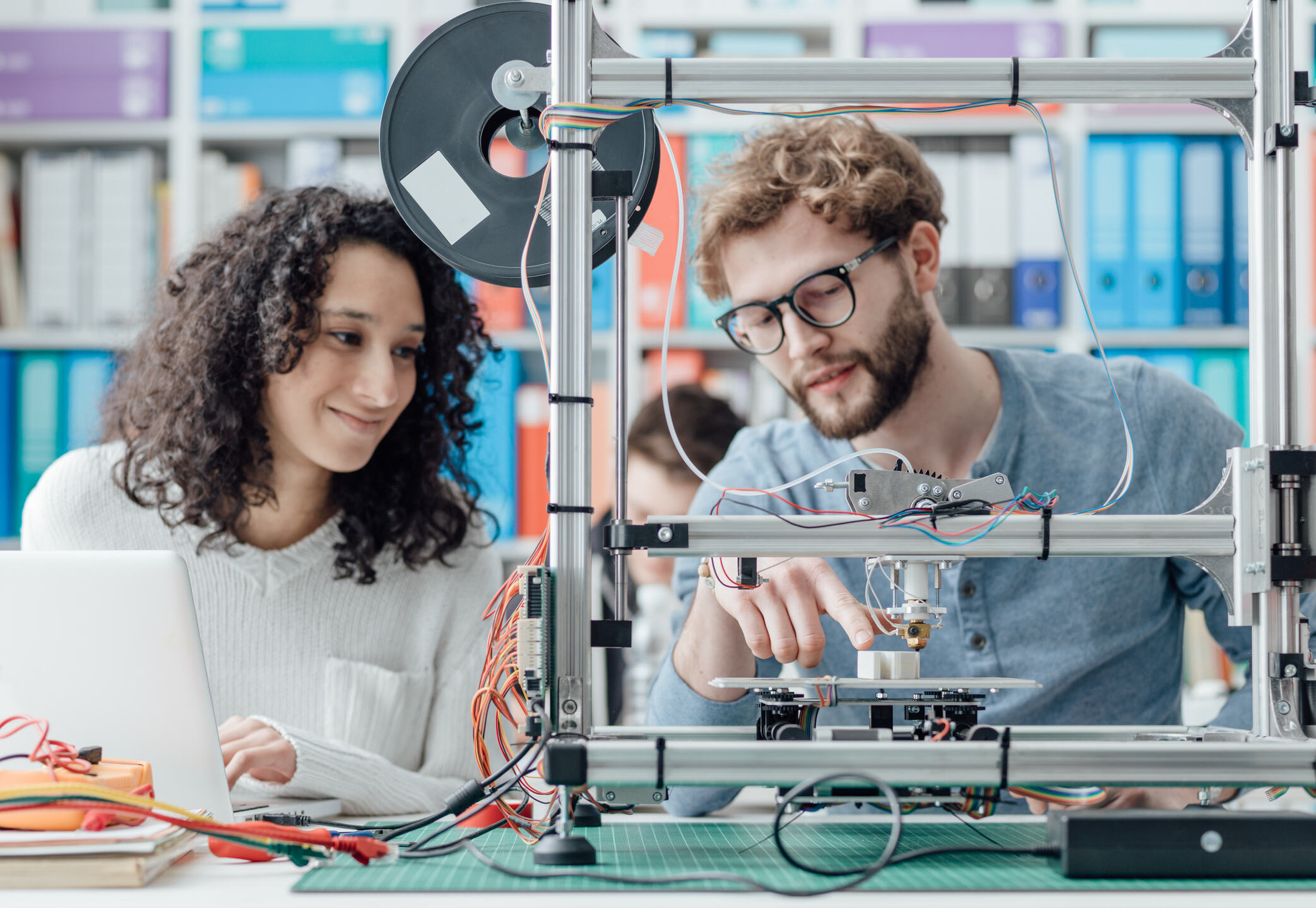Introduction
With the rapid advancement of technology, the world is witnessing groundbreaking innovations in various domains. One such innovation is the advent of 3D printing, which has revolutionized the manufacturing industry. While 3D printers were initially used to create small, non-functional objects, they have now evolved to produce complex and functional items, including firearms.
In this article, we will delve into the world of 3D printed firearms and explore the process of making a handgun using a 3D printer. From understanding the concept of blueprints to addressing the legal and safety aspects, we will provide a comprehensive guide for those interested in this controversial realm.
It is crucial to note that this article aims to educate and inform, and does not endorse or promote the creation or use of 3D printed firearms. We acknowledge the ongoing debate and legal concerns surrounding this topic and encourage readers to familiarize themselves with the laws and regulations of their respective jurisdictions.
Join us as we navigate through the intricacies of 3D printing and uncover the complexities associated with creating firearms in the digital age. Whether you’re a technology enthusiast, a legal scholar, or simply curious about the boundaries of innovation, this article will provide valuable insights into the world of 3D printed firearms.
What are Blueprints?
Blueprints are detailed, technical drawings that serve as a guide for constructing or manufacturing a specific object or structure. They provide precise measurements, specifications, and annotations to ensure accurate replication. Originally, blueprints were created using a chemical process that resulted in blue lines on white paper, hence the name. However, in the digital era, blueprints are typically created and shared electronically.
In the context of 3D printed firearms, blueprints play a vital role. These digital plans contain all the necessary information to successfully fabricate a functional firearm using a 3D printer. They include specifications such as the dimensions of each individual part, the materials required, and assembly instructions.
Firearm blueprints encompass various components, including the frame, slide, barrel, trigger assembly, and grip. These designs are meticulously crafted to ensure the gun can safely operate and discharge ammunition. It is crucial to follow the blueprint instructions precisely to ensure the structural integrity and functionality of the firearm.
With the rise of the internet, 3D printed firearm blueprints have become more accessible, leading to concerns regarding their distribution and potential misuse. The ability to easily share these designs online has sparked debates surrounding the legality and ethical implications of DIY firearms. Additionally, regulatory authorities face the challenge of balancing public safety with the preservation of personal liberties.
Understanding the intricacies of blueprints is essential when exploring the world of 3D printed firearms. While blueprints provide invaluable guidance for the manufacturing process, it is crucial to bear in mind the legal and moral considerations associated with the creation and use of these DIY weapons.
The Controversy Surrounding 3D Printed Firearms
The rise of 3D printed firearms has sparked a significant amount of controversy and debate, touching on various social, legal, and ethical concerns. Opponents of these weapons argue that they pose significant risks to public safety, while proponents advocate for individual rights and technological innovation. Let’s explore some of the key points driving this controversy:
- Accessibility: One of the main concerns surrounding 3D printed firearms is their accessibility. Unlike conventional firearms, which require licenses and background checks for ownership, 3D printed guns can be created by anyone with access to a 3D printer and the appropriate blueprints. This easy access raises concerns about potential misuse and circumvention of firearms regulations.
- Untraceability: Another significant issue is the difficulty of tracing 3D printed firearms. Since these weapons are often made from plastic or composite materials, they lack the identification markings typically found on traditional firearms. This means that if a crime is committed using a 3D printed gun, it can be more challenging for law enforcement to track the weapon back to its creator or owner.
- Safety and Reliability: Critics argue that 3D printed firearms may lack the necessary durability and reliability found in commercially manufactured weapons. The materials used and the limitations of 3D printing technology may compromise the structural integrity and overall safety of these guns. This raises concerns about accidental malfunctions that could result in injury or even death.
- Regulatory Challenges: For lawmakers and regulatory bodies, the emergence of 3D printed firearms presents a considerable challenge. The rapid advancement of technology has outpaced legislation surrounding these weapons, leaving many jurisdictions struggling to find appropriate and effective ways to regulate their creation and use. Balancing the need for public safety without infringing on individual rights is a complex endeavor.
- Free Speech and Information Sharing: The ability to freely share and distribute digital blueprints for 3D printed firearms has ignited debates around the boundaries of free speech and the responsibilities of online platforms. While some argue that restricting the dissemination of such information is necessary to prevent the proliferation of potentially dangerous weapons, others uphold the principles of free speech and open access to information.
These are just a few of the main points fueling the controversy surrounding 3D printed firearms. The debate continues to evolve as technology advances, and legislators grapple with finding appropriate solutions to address the potential risks associated with these weapons while preserving individual freedoms.
Understanding the Legality of 3D Printed Firearms
The legality surrounding 3D printed firearms is a complex and evolving issue that varies from country to country. Due to the unprecedented nature of these weapons and the rapid advancement of technology, existing firearm regulations often struggle to adequately address the risks and challenges posed by 3D printed guns. Here are some crucial factors to consider when examining the legal landscape:
- Firearms Laws: Understanding the existing firearms laws in your jurisdiction is essential. In many countries, owning and manufacturing firearms without proper licenses and permits is strictly regulated or even prohibited. This includes 3D printed firearms. Make sure to familiarize yourself with the specific regulations governing firearms in your area before engaging in any 3D printing activities related to firearms.
- Controlled Items: In some jurisdictions, specific components or materials used in 3D printed firearms may be classified as controlled items, subject to additional regulations or restrictions. It is crucial to research and understand the laws and regulations governing the particular parts and materials involved in the manufacturing process.
- Undetectable Firearms: Detection of firearms is a critical concern for public safety. Many countries have laws in place that prohibit the manufacturing or possession of undetectable firearms, which includes 3D printed guns that can potentially evade metal detectors or other security measures commonly used in public spaces.
- International Export Controls: If you plan to share or distribute 3D printed firearm blueprints online, it is important to consider the implications of international export controls. Some countries have strict regulations regarding the export of firearm-related technology, including digital designs. Failure to comply with these regulations could lead to legal consequences.
- Changes in Legislation: Given the rapidly changing landscape, it is crucial to stay updated on any changes in legislation or court rulings related to 3D printed firearms. As lawmakers grapple with the challenges posed by these weapons, there may be amendments or new regulations introduced that impact their legality.
Remember that this article does not constitute legal advice, and it is your responsibility to research and understand the laws and regulations specific to your jurisdiction. Engaging in any activities related to 3D printed firearms without proper legal knowledge and compliance can have severe consequences.
It is advisable to consult with legal professionals who specialize in firearms laws to ensure you are fully informed and aware of the legal implications associated with 3D printed firearms in your area.
Required Materials and Equipment
To embark on the journey of creating a 3D printed firearm, you will need certain materials and equipment. Here is a list of the essential items required:
- 3D Printer: The cornerstone of this process is, of course, a 3D printer. It is important to select a printer that meets your specific needs and budget. Consider factors such as print quality, build volume, and compatibility with various filaments. Make sure to choose a printer that is capable of producing durable and functional parts.
- 3D Filament: Filament is the material used for 3D printing. When it comes to printing firearms, it is recommended to use high-strength filaments such as ABS (Acrylonitrile Butadiene Styrene) or PETG (Polyethylene Terephthalate Glycol). These materials provide better mechanical properties and are more suitable for creating functional firearm components.
- Firearm Components: While the majority of the firearm will be 3D printed, there are certain components that require additional materials. These components, such as springs, bolts, and firing pins, are typically made from metal. It is important to source high-quality firearm components that are compatible with your design and meet legal requirements.
- Computer-Aided Design (CAD) Software: In order to modify and customize the 3D firearm blueprint, you will need CAD software. CAD software allows you to manipulate the design files and ensure proper dimensions and functionality. There are various CAD software options available, ranging from free to commercial, so choose one that suits your level of expertise and needs.
- Work Area and Safety Equipment: Set up a dedicated work area for your 3D printing activities. Ensure proper ventilation and a clean, organized space. In terms of safety equipment, use gloves and eye protection whenever handling any materials or equipment. It is important to prioritize safety throughout the entire process.
These are the basic materials and equipment required to begin the journey of creating a 3D printed firearm. It is essential to acquire reliable and high-quality items to ensure the safety and functionality of the final product.
Always keep in mind the legal implications of manufacturing firearms and adhere to the applicable laws and regulations in your jurisdiction.
Choosing the Right 3D Printer
When delving into the realm of 3D printed firearms, selecting the right 3D printer is crucial. With a wide range of options available on the market, it is essential to consider several key factors before making a decision. Here are some important aspects to consider when choosing a 3D printer for manufacturing firearms:
- Print Quality: Look for a 3D printer that can produce high-quality prints with smooth surfaces and fine details. This is particularly important for firearm components that require precision and accuracy. Consider the printer’s resolution, layer height, and print speed to ensure it can meet your specific requirements.
- Build Volume: The build volume refers to the maximum size of the object that can be printed. Since firearms can be larger and more complex compared to other objects, make sure the printer you choose has a sufficient build volume to accommodate the size of the firearm components you intend to print.
- Compatibility with Filaments: Check the compatibility of the 3D printer with the filaments you plan to use for printing firearm parts. Ensure that it can handle high-strength filaments like ABS or PETG, which are recommended for durability and functionality.
- Reliability and Durability: Look for a printer that is known for its reliability and durability. The process of 3D printing firearms may involve long printing times and repeated use, so it’s important to choose a printer that can withstand continuous operation without significant issues or breakdowns.
- User-Friendly Interface: Consider the user interface and ease of use when selecting a 3D printer. Look for features such as touchscreen displays, intuitive navigation, and user-friendly software. These factors can save you time and effort during the printing process.
- Support and Community: Check if the printer manufacturer provides adequate customer support, including troubleshooting assistance and software updates. Additionally, consider the presence of a supportive user community or online forums where you can seek guidance and share experiences with fellow 3D printing enthusiasts.
By considering these factors and conducting thorough research, you can make an informed decision when choosing a 3D printer for manufacturing firearms. Remember to also consider your budget and specific printing requirements to find the best printer that suits your needs.
Always ensure compliance with applicable laws and regulations pertaining to firearms, and prioritize safety throughout the entire process.
Finding Reliable Firearm Blueprints Online
When venturing into the world of 3D printed firearms, finding reliable and accurate firearm blueprints is of utmost importance. Due to the controversial nature of the topic and the potential risks involved, it is crucial to ensure that the blueprints you obtain are trustworthy and adhere to legal standards. Here are some guidelines for finding reliable firearm blueprints online:
- Recognized 3D Printing Communities: Explore well-established 3D printing communities and forums that have dedicated sections or threads specifically for firearm blueprints. These communities often have moderators who enforce quality standards and ensure that the blueprints shared are reliable and legitimate.
- Open-Source Repositories: Look for open-source repositories that host firearm blueprints. These repositories are often maintained by a community of contributors who collaborate to provide accurate and verified blueprints. Websites like GitHub and Thingiverse are popular platforms for sharing open-source 3D printable files, including firearm designs.
- Expert Recommendations: Seek recommendations and guidance from experts in the 3D printing and firearms community. Engage in discussions, attend relevant conferences or workshops, and connect with individuals who have extensive knowledge and experience in this field. Their insights can help identify reliable sources for firearm blueprints.
- Legal Considerations: Familiarize yourself with the laws and regulations in your jurisdiction concerning the sharing and distribution of firearm blueprints. Ensure that the blueprints you access and use comply with these laws. Be cautious of any blueprints that may be prohibited or restricted in your area.
- User Feedback and Reviews: Read user feedback and reviews on the blueprints you are considering using. The experiences and insights shared by others can help you gauge the reliability and suitability of the blueprints for your intended purpose.
Remember, when accessing and utilizing firearm blueprints, it is essential to act responsibly and in compliance with the laws and regulations of your jurisdiction. Improper use or distribution of firearm blueprints can have serious legal consequences. Prioritize safety, legality, and ethical considerations throughout your 3D printing journey.
Always exercise caution and research thoroughly to ensure that the firearm blueprints you obtain are credible, reliable, and aligned with your legal and moral obligations.
Step-by-Step Guide to Printing a Handgun
Printing a handgun using a 3D printer requires careful attention to detail, precision, and adherence to safety measures. It is crucial to emphasize that the creation of firearms should always be in compliance with the laws and regulations of your jurisdiction. Here is a general step-by-step guide to help you understand the process:
- Choose the Design: Select a reliable and verified firearm blueprint that aligns with your preferences and meets legal requirements. Ensure that the blueprint includes all the necessary files and instructions for each component of the handgun.
- Prepare the CAD Files: If needed, modify the CAD files of the blueprint using CAD software to customize dimensions or other aspects of the design. However, ensure that modifications comply with legal guidelines and do not compromise the functionality or safety of the firearm.
- Import the Files into Slicing Software: Import the modified CAD files or the original blueprint files into slicing software, which prepares the digital model for 3D printing by dividing it into specific layers.
- Configure Printing Parameters: Set the appropriate printing parameters in the slicing software, such as layer height, infill density, and print speed. These settings influence the quality, strength, and speed of the printing process.
- Prepare the 3D Printer: Ensure that the 3D printer is properly calibrated and has the correct type and color of filament loaded. Preheat the printer to the recommended temperature for the filament you are using.
- Start Printing: Initiate the printing process using the sliced files and let the 3D printer gradually build up each layer of the handgun components. Monitor the progress and address any issues that may arise, such as filament jams or adhesion problems.
- Clean and Assemble the Parts: Once the printing is complete, carefully remove the printed parts from the printer’s build plate and clean them of any support structures or imperfections. Follow the assembly instructions provided in the blueprint to assemble the various components of the handgun.
- Post-Processing and Finishing: Depending on the filament used and the desired aesthetics, you may need to perform post-processing tasks such as sanding, painting, or applying finishes to the 3D printed handgun parts. Be cautious to maintain the structural integrity and functionality of the firearm during this process.
- Test and Evaluate: After completing the assembly and finishing touches, it is essential to conduct rigorous testing to ensure the functionality and safety of the printed handgun. Test it in a controlled and secure environment, following appropriate safety protocols.
Throughout the entire process, prioritize safety, adherence to legal requirements, and responsible use of 3D printed firearms. Always remember to exercise caution when handling and testing any firearm, whether 3D printed or conventionally manufactured.
Post-Processing and Finishing Touches
After successfully 3D printing the components of a handgun, post-processing tasks and finishing touches are necessary to ensure the desired appearance and functionality of the firearm. Here are some steps to consider:
- Cleaning and Removal of Support Structures: Carefully remove any support structures or remnants from the printed parts using appropriate tools. Take care not to damage or compromise the integrity of the components during this process.
- Sanding: Smooth out any rough surfaces or imperfections on the printed parts using sandpaper or sanding tools. This helps improve the overall appearance and texture of the firearm.
- Painting and Coloring: If desired, apply paint or other coloring agents to give the firearm a specific appearance. Make sure to choose paints that are suitable for the material used in the 3D printing process. Take precautions to avoid blocking or interfering with functional areas, such as mating surfaces or moving parts.
- Applying Finishes: Consider applying finishes such as clear coatings or protective sprays to enhance the durability and longevity of the firearm. These finishes can provide an added layer of protection against wear and tear.
- Assembly: Follow the assembly instructions provided in the firearm blueprint to assemble the various components of the handgun. Take your time during this step to ensure that the parts fit together properly and securely.
- Lubrication: Apply appropriate lubricants to the moving parts of the firearm to ensure smooth operation and prevent wear. This step is crucial for maintaining the functionality and longevity of the firearm.
- Functional Testing: Once the post-processing and finishing touches are complete, conduct thorough functional testing to ensure that the firearm operates as intended. Make sure to perform this testing in a controlled and secure environment, following safety protocols and guidelines.
It is important to remember that while post-processing and finishing touches can enhance the appearance of the firearm, they should never compromise the structural integrity or functionality of the weapon. Prioritize safety and ensure compliance with applicable laws and regulations at all times.
Always handle and use firearms, including 3D printed ones, responsibly and follow proper safety practices. Educate yourself on firearm safety protocols and seek training if necessary.
Safety Considerations When Handling 3D Printed Firearms
When it comes to handling 3D printed firearms, safety should be the utmost priority. Whether you are manufacturing or using these weapons, it is crucial to adhere to strict safety measures to prevent accidents and ensure responsible use. Here are some important safety considerations to keep in mind:
- Legal Compliance: Before even considering the creation or use of a 3D printed firearm, thoroughly research and understand the laws and regulations in your jurisdiction. Ensure that you are in full compliance with any licensing, registration, or permit requirements that may apply.
- Knowledge and Familiarity: Educate yourself about firearms, including their assembly, operation, and maintenance. Understand the specific characteristics and limitations of the 3D printed firearm you have created or obtained. Knowing how to safely handle and fire the weapon is essential for preventing accidents.
- Proper Storage: Store 3D printed firearms securely and responsibly to prevent unauthorized access, particularly if you have children or vulnerable individuals in your household. Use lockable storage containers or gun safes that meet the required safety standards.
- Safe Handling Practices: Treat a 3D printed firearm with the same level of caution and respect as any conventional firearm. Always assume it is loaded, even if you believe it is not. Keep your finger off the trigger until you are ready to shoot. Never point the firearm at anything you do not intend to shoot.
- Shooting Environment: Choose a safe and appropriate location for shooting the 3D printed firearm. Ensure that you are in compliance with local laws and regulations regarding the discharge of firearms. Follow all safety guidelines and consider using protective gear such as ear and eye protection.
- Maintenance and Inspections: Regularly inspect and maintain the 3D printed firearm to ensure it is in proper working order. Follow the recommended maintenance procedures provided by the blueprint or seek guidance from experts. Replace any worn or damaged components promptly.
- Accurate Ammunition: Only use suitable and reliable ammunition that complies with the specifications provided for the 3D printed firearm. Using incorrect or incompatible ammunition can lead to malfunctions and dangerous situations.
- Reporting and Responsible Behavior: If you encounter any issues or malfunctions with the 3D printed firearm, cease using it immediately and report the problem to the appropriate authorities. It is your responsibility to act responsibly and report any concerns to ensure the safety of yourself and others.
Remember, safety is of paramount importance when dealing with firearms, whether they are 3D printed or conventionally manufactured. Always prioritize responsible and legal use, and seek further guidance or training from professionals if needed.
Continuously educate yourself on firearm safety and promote responsible behavior to ensure the well-being of yourself, those around you, and the broader community.
Conclusion
The world of 3D printed firearms is a complex and controversial realm that intersects technology, innovation, and legal considerations. Throughout this article, we have explored various aspects of creating and handling 3D printed firearms, aiming to provide valuable insights and recommendations.
It is crucial to emphasize that the primary purpose of this article is to educate and inform readers about the topic. We do not endorse the creation, distribution, or use of 3D printed firearms without adherence to the laws and regulations of your jurisdiction.
When engaging in any activities related to 3D printed firearms, it is of utmost importance to prioritize safety, legality, and ethical conduct. This includes conducting thorough research, following proper handling and storage practices, and complying with all applicable laws and regulations.
We encourage readers to approach this subject with responsibility and respect, considering the potential risks associated with 3D printed firearms. Always prioritize the well-being and safety of yourself and others above all else.
Technology and innovation continue to evolve at a rapid pace, and the ethical and legal debates surrounding 3D printed firearms are likely to continue. It is essential for individuals, lawmakers, and society as a whole to engage in constructive discussions and develop comprehensive strategies that balance personal freedoms and public safety.
Remember that the information presented in this article is not meant to substitute professional legal advice. If you have any specific legal concerns or questions, consult with legal professionals who specialize in firearms laws in your jurisdiction.
As technology progresses, new possibilities and challenges will emerge. We hope that this article has served as a valuable resource, providing insights and guidance in your exploration of the world of 3D printed firearms.







